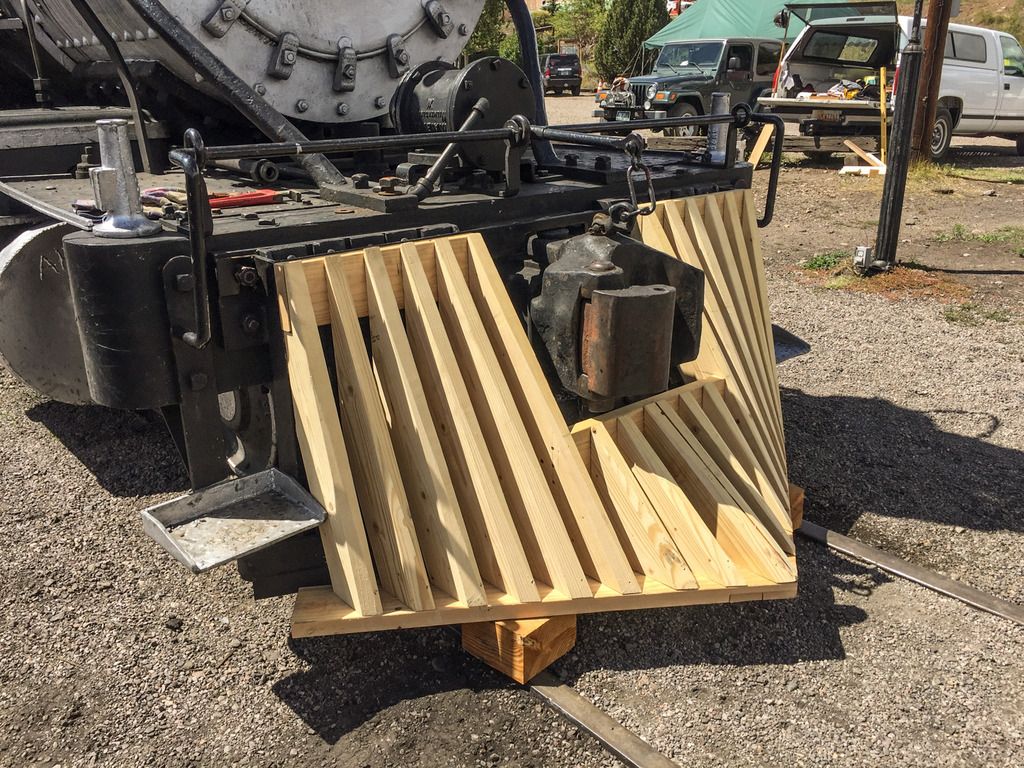Got to start to actually build this thingie. Laid out location lines for the top boards to match the bottom board. To keep the Pieces in registration to each other thru out the build, I screwed the top boards to the jig, After drilling access holes thru the jig to let me screw the vertical boards to the top boards.
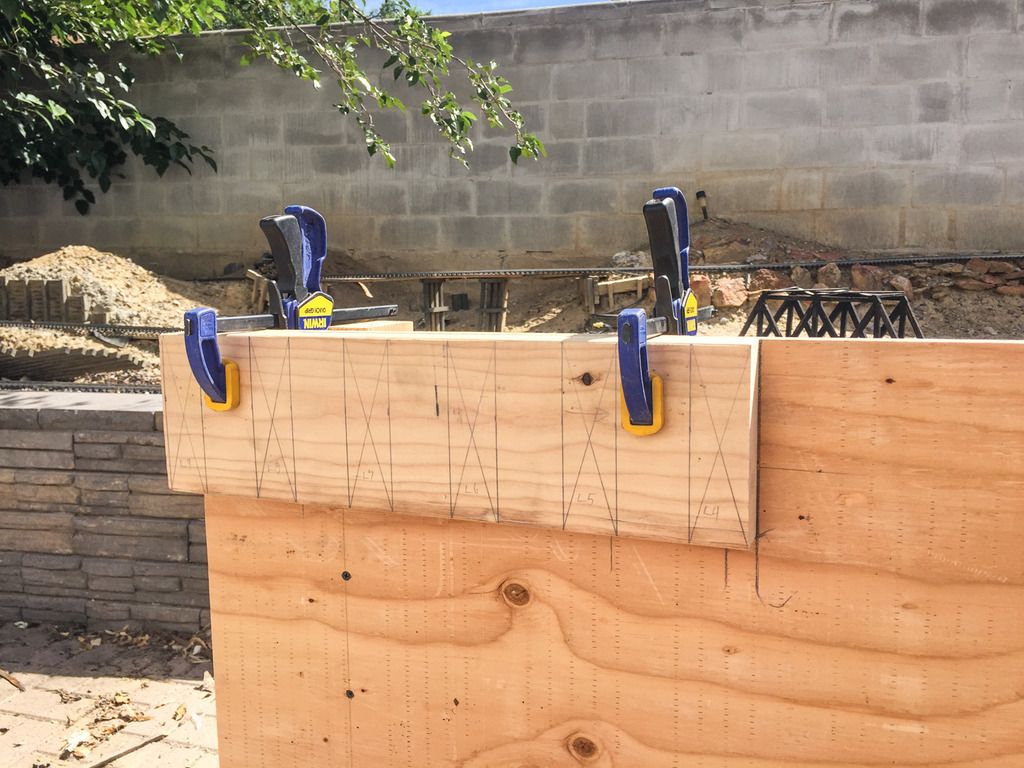
The small holes are for screws, and the larger holes are for dowelling.
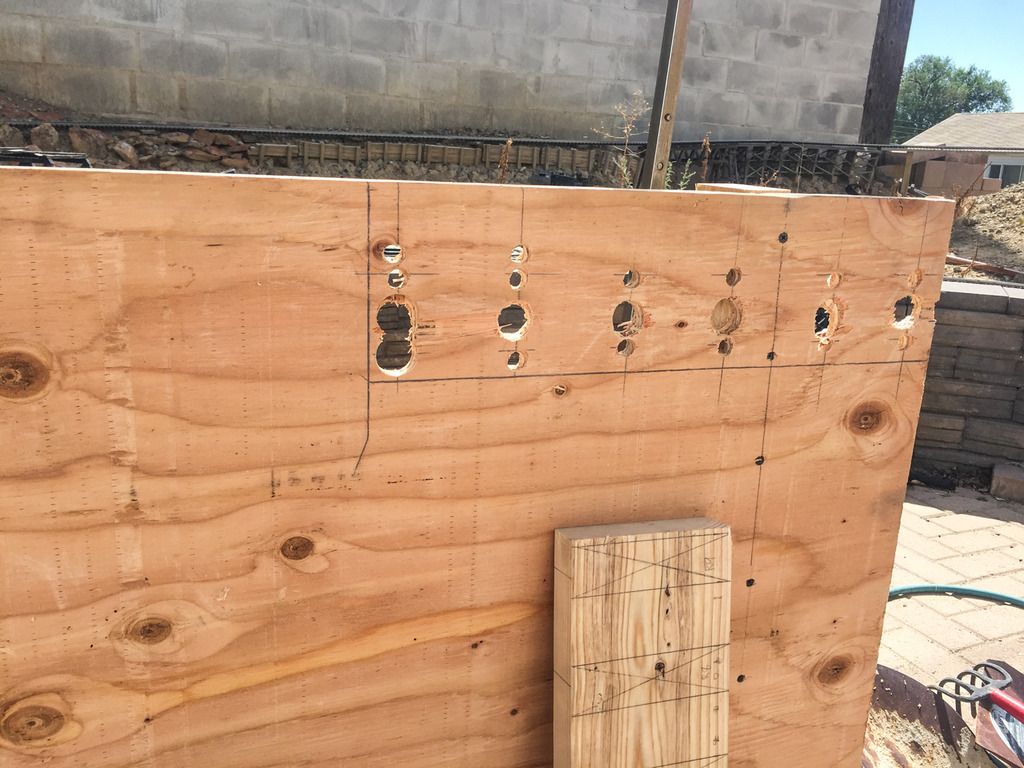
I located the bottom board to its required position, and attached guides to hold in place, to keep it in registration on the jig.

Now with the top and bottom boards in alignment, and in correct placement to each other, I could now get a correct measurement for the length of each vertical board.
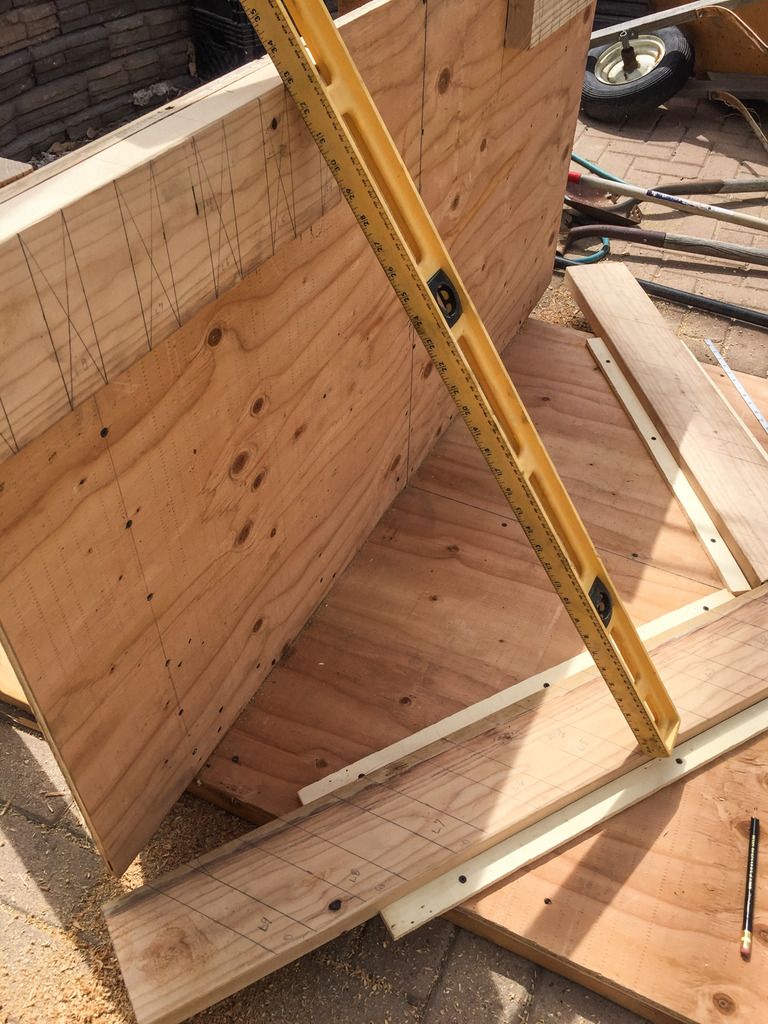
And by fixing a straight edge from top to bottom, I can measure the angle to cut to get a perfect fit.
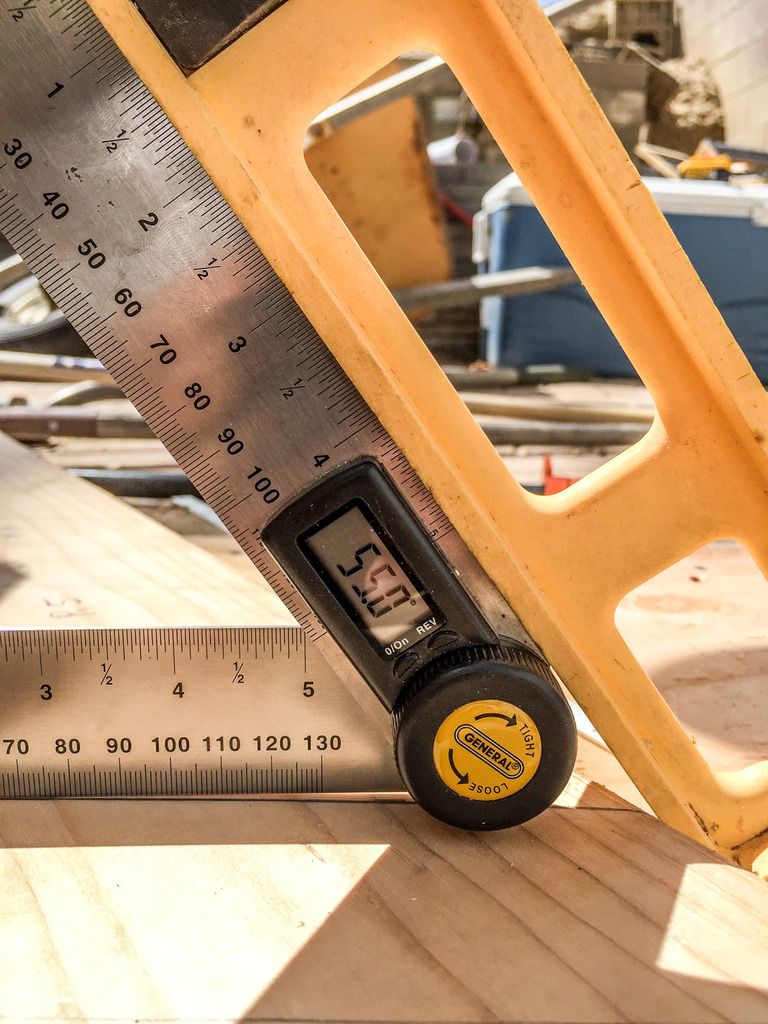
Because the top board is vertical and the bottom board is horizontal, and in a “V” shape, every board is a different length, and the angles likewise change , top and bottom, on every vertical piece.
Measure twice, and cut once, rule really applies here.
The Right and Left sides are mirror of each other, So I can cut and build both sides at the same time, or mess up both sides the same…
Started with two pieces of 2x6 lumber, and cut to length, and then cut the first end to the required degrees on the miter saw. and then the reciprocal degree cut to equal 90 deg on the other end.
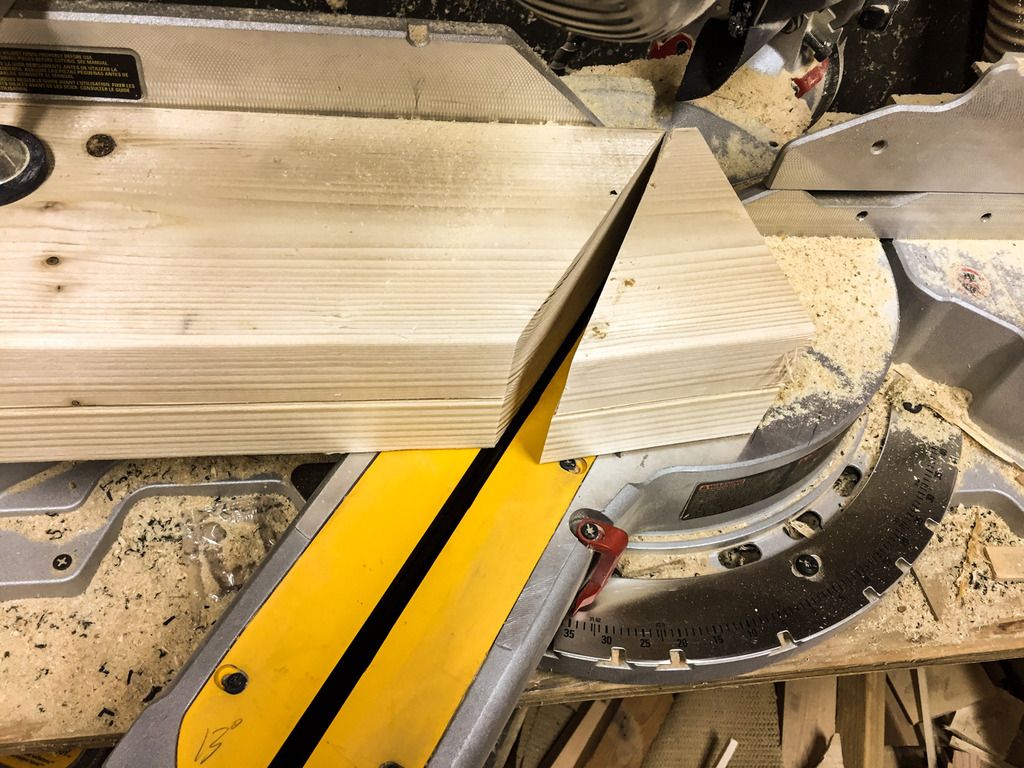
Got the first two center boards attached, that make up the sides of the knuckle pocket opening.

Notice that the vertical board front edge hangs over the bottom board on one corner. This overhang will be planed off latter to match the “v” angle of the bottom board.
Cut and laid out the center board, that will hold the tops of the middle boards below the knuckle pocket. Pre drilled and set the screws ahead of time due to clearance issues with the jig.
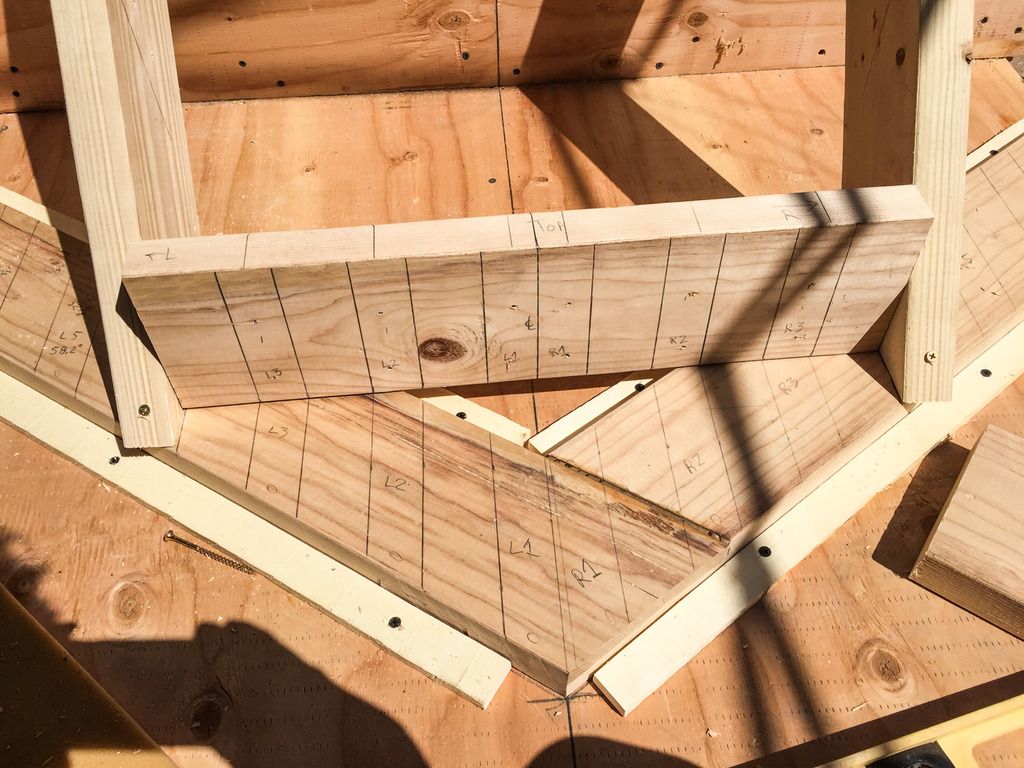
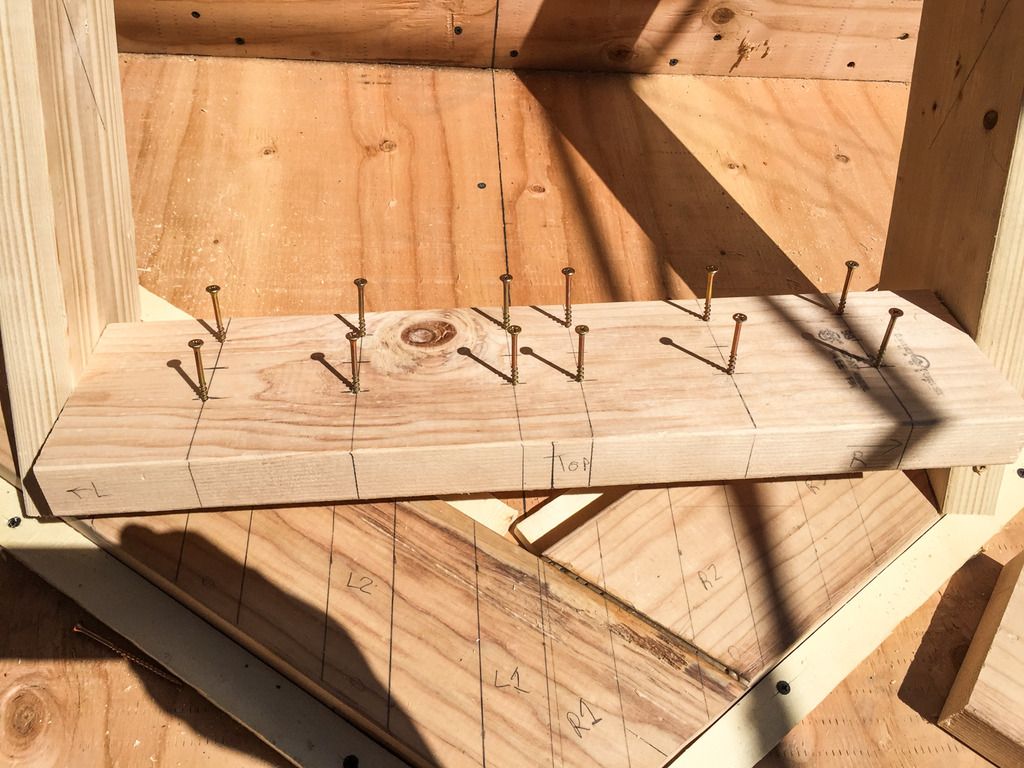
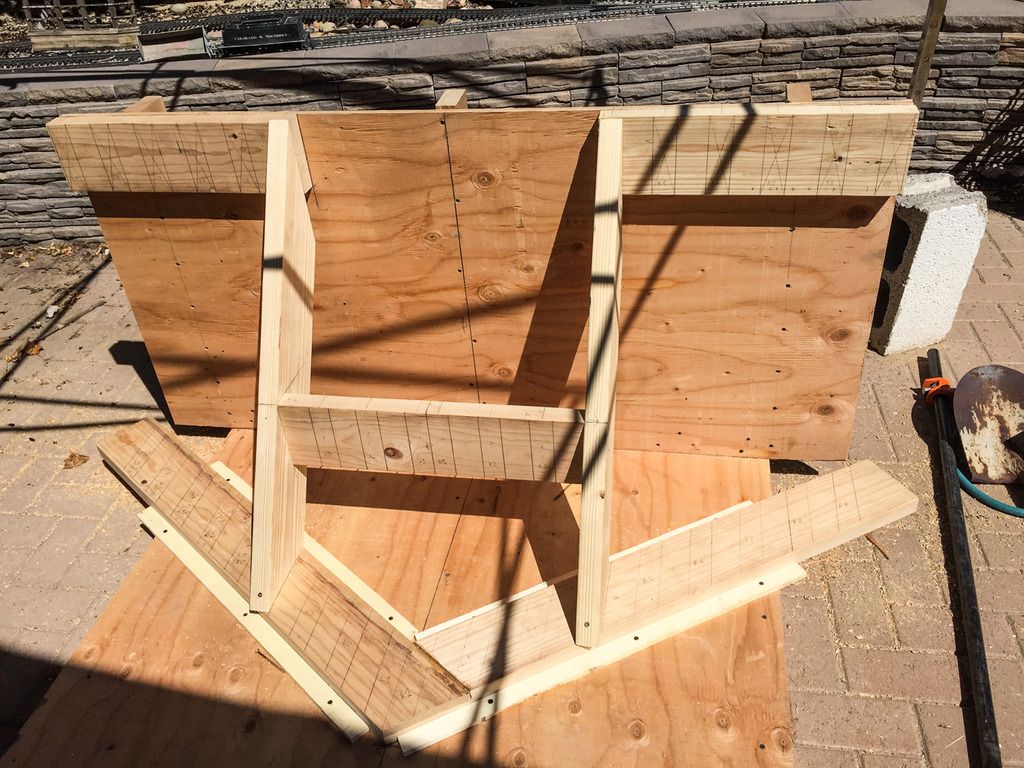
And cut and attached the middle section boards. The center has two boards sandwiched together for added strength. The D&RG used two 1/2 " steel pieces.
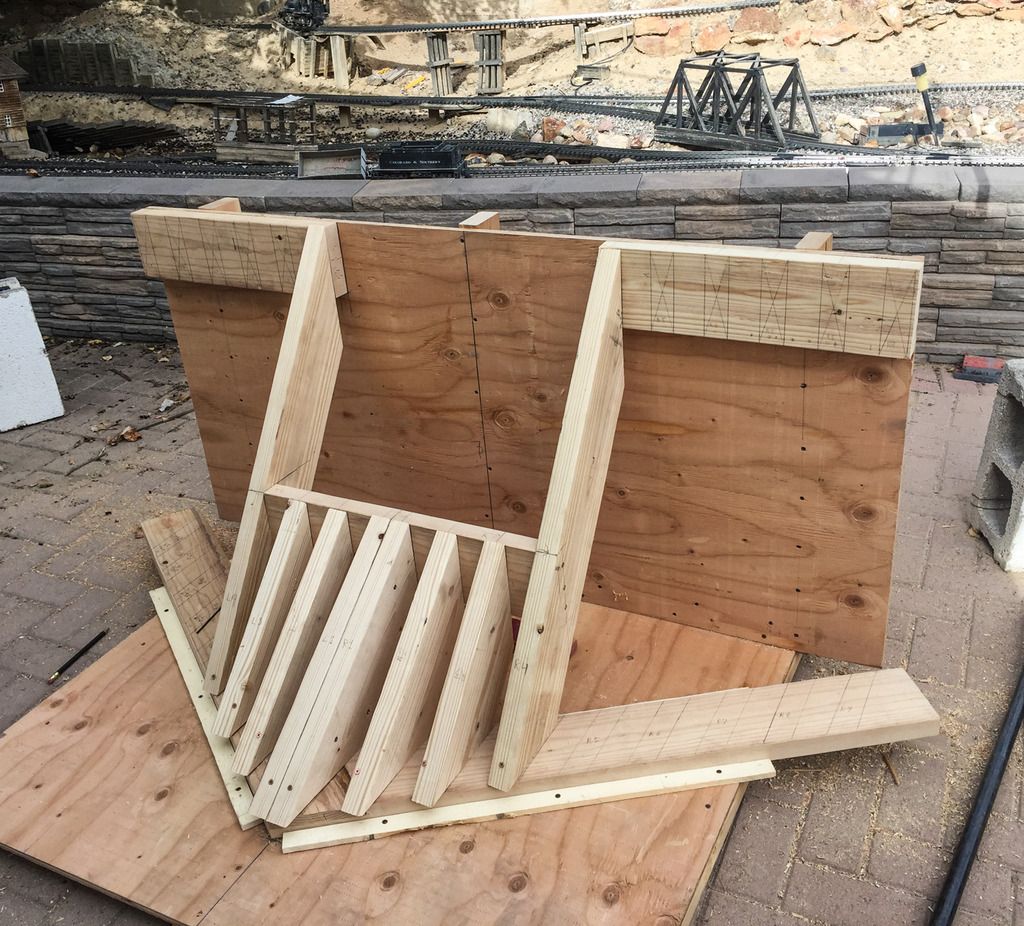
It’s starting to look like the real thing. This project is to large for my workbench and would be to tall to work on, So it’s being built in my back patio.
Had to call a halt today due to RAIN, whooyah. In this drought conditions we always welcome any rain we can get, even if it slows down other projects.
Stay tuned for more.
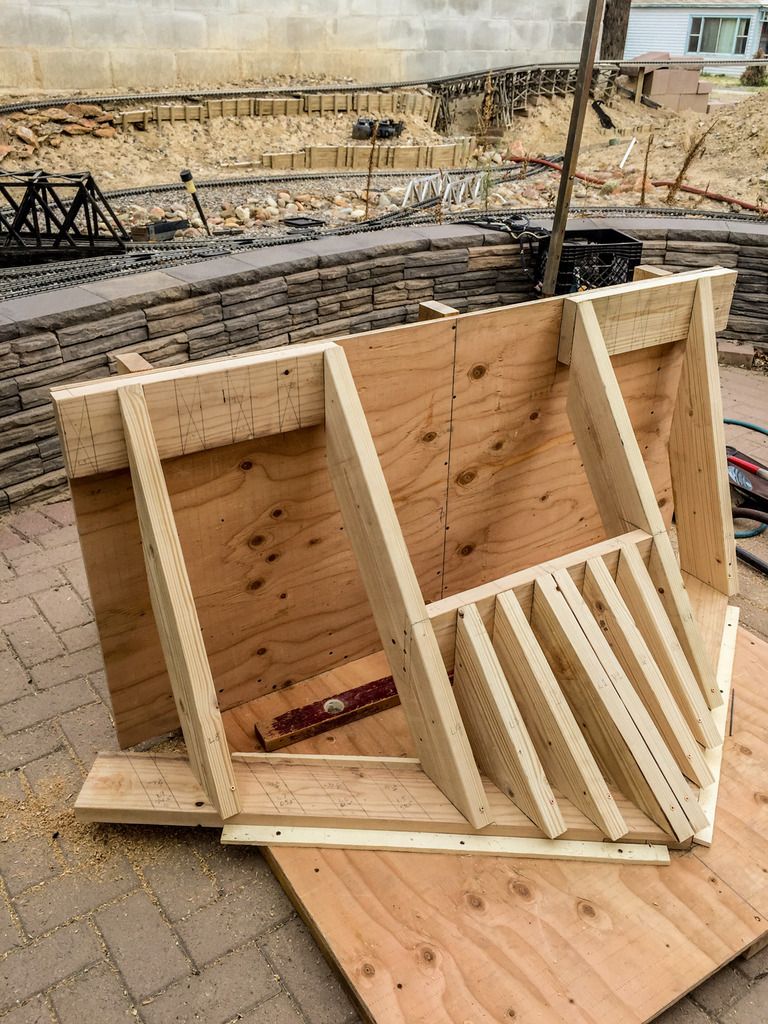
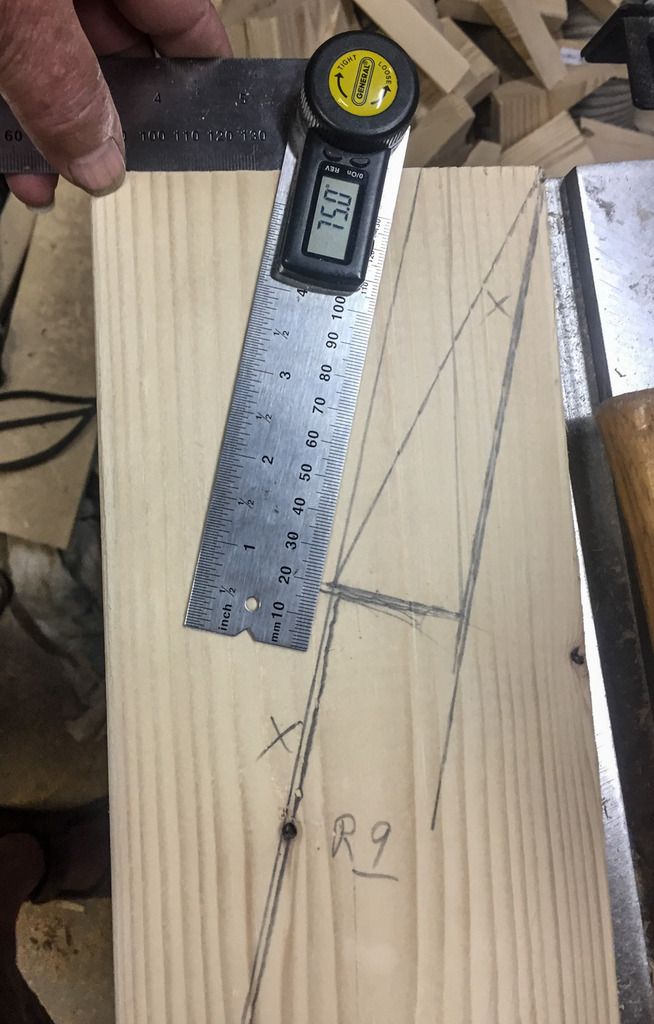
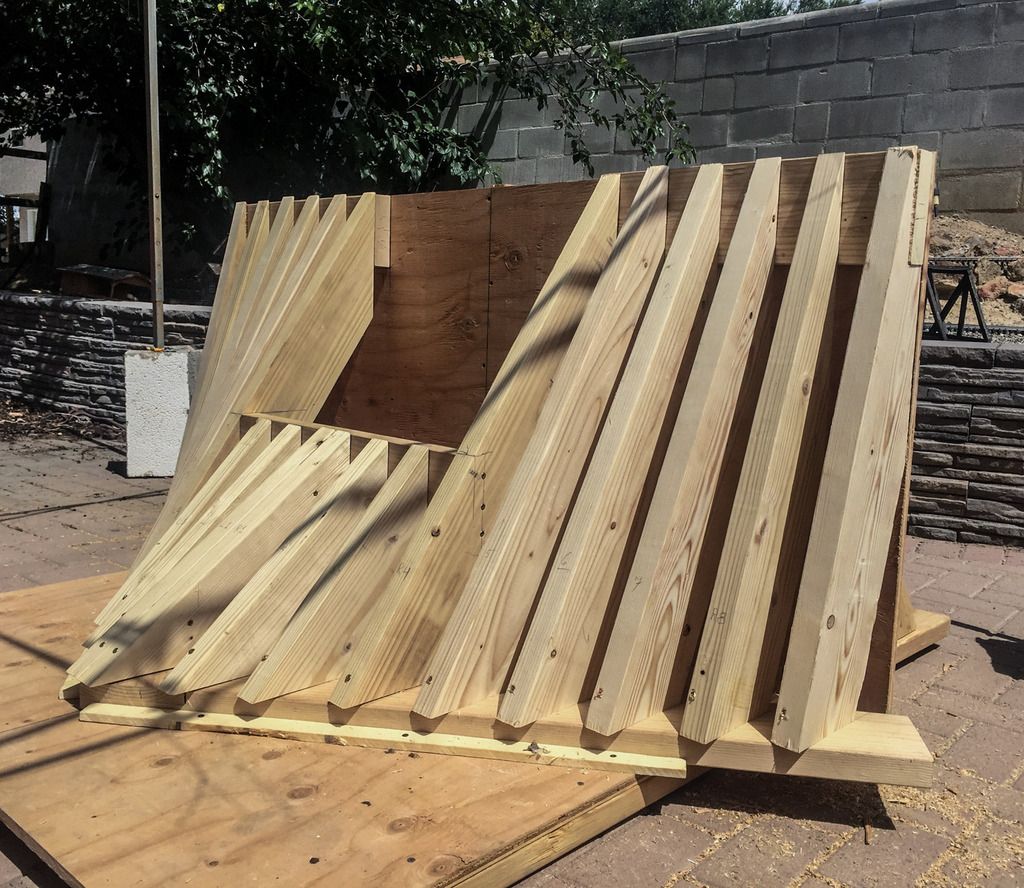




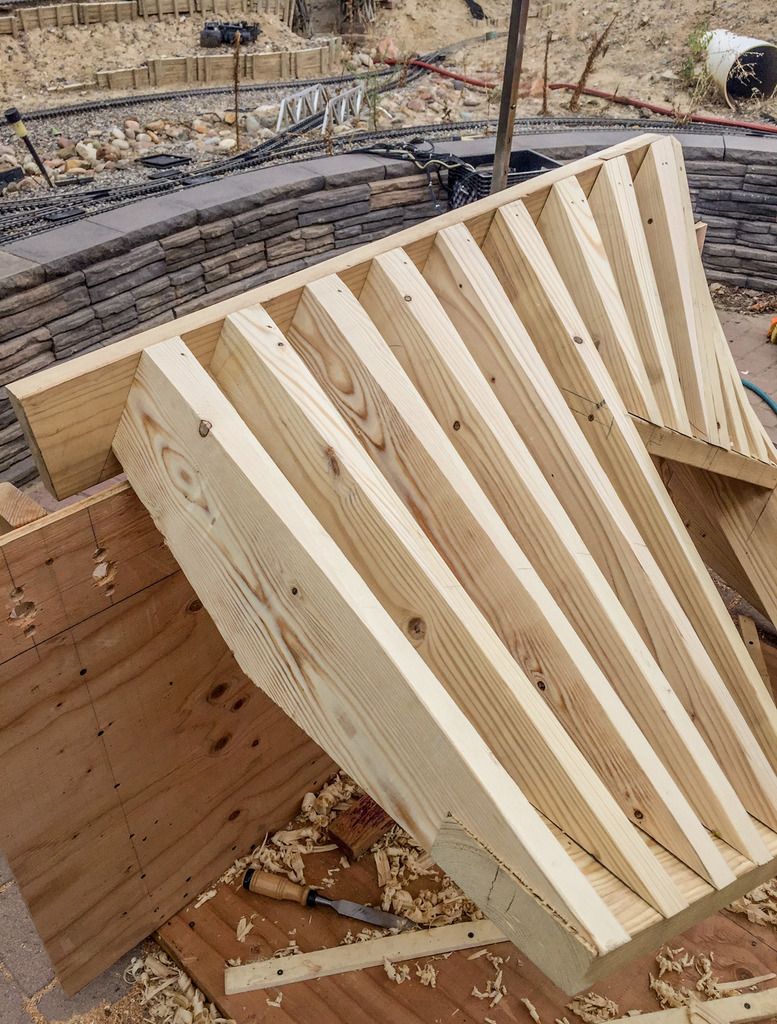
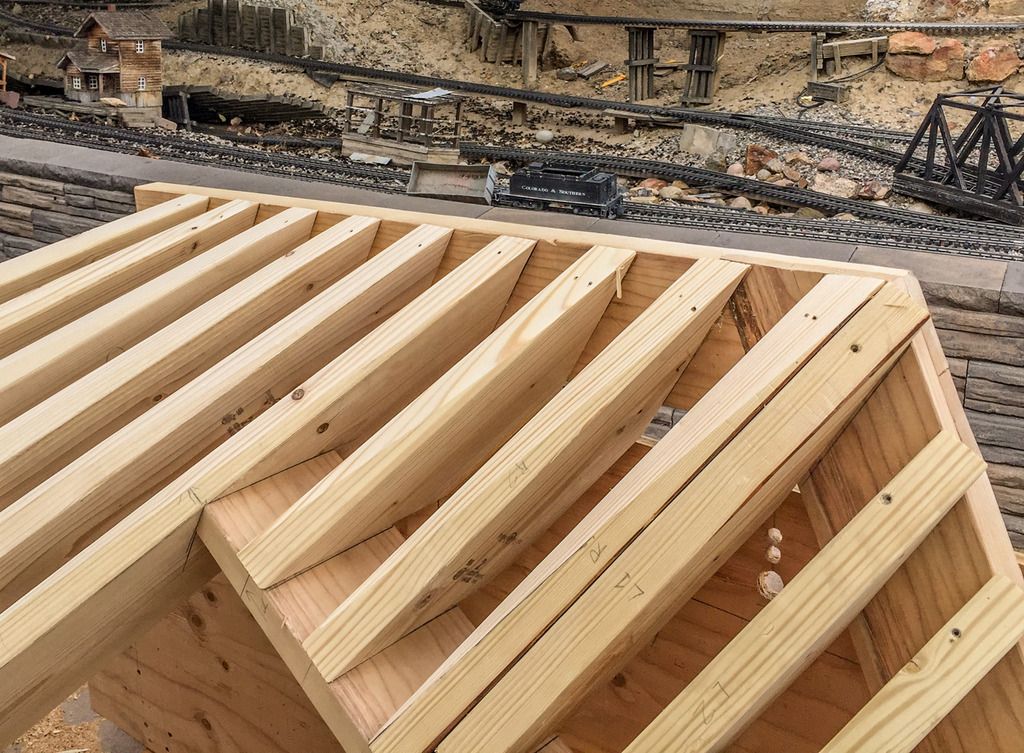
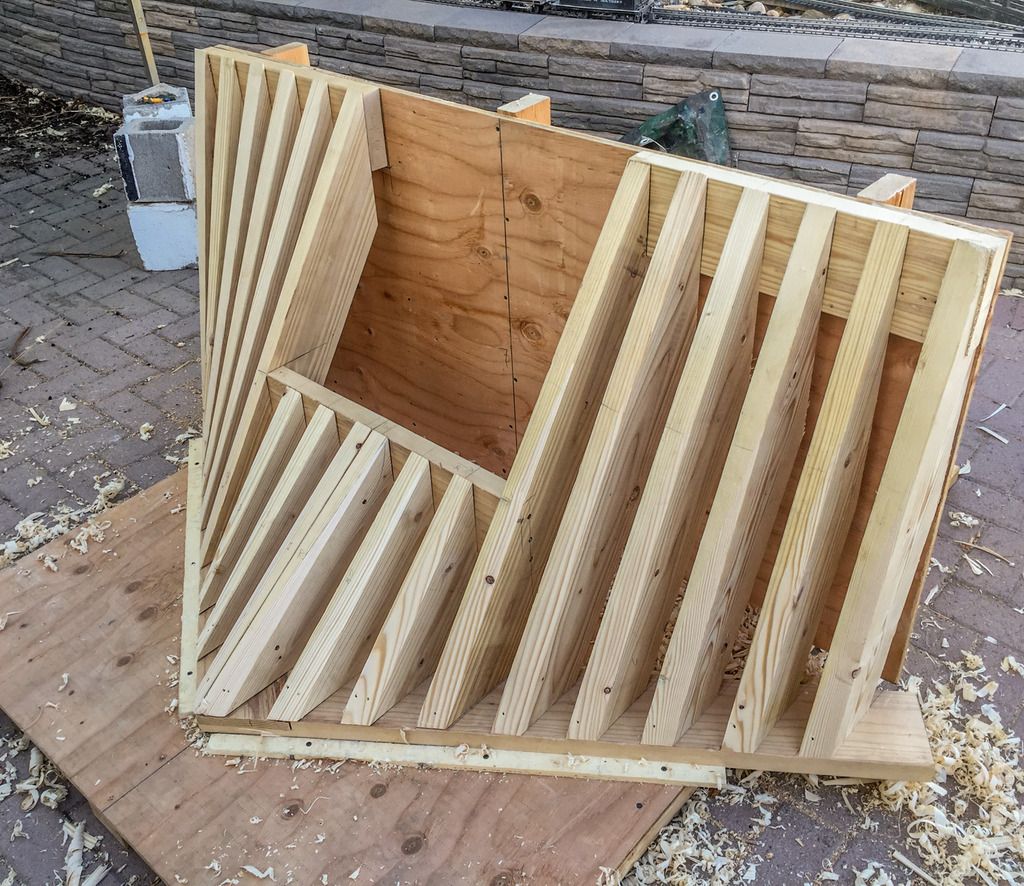
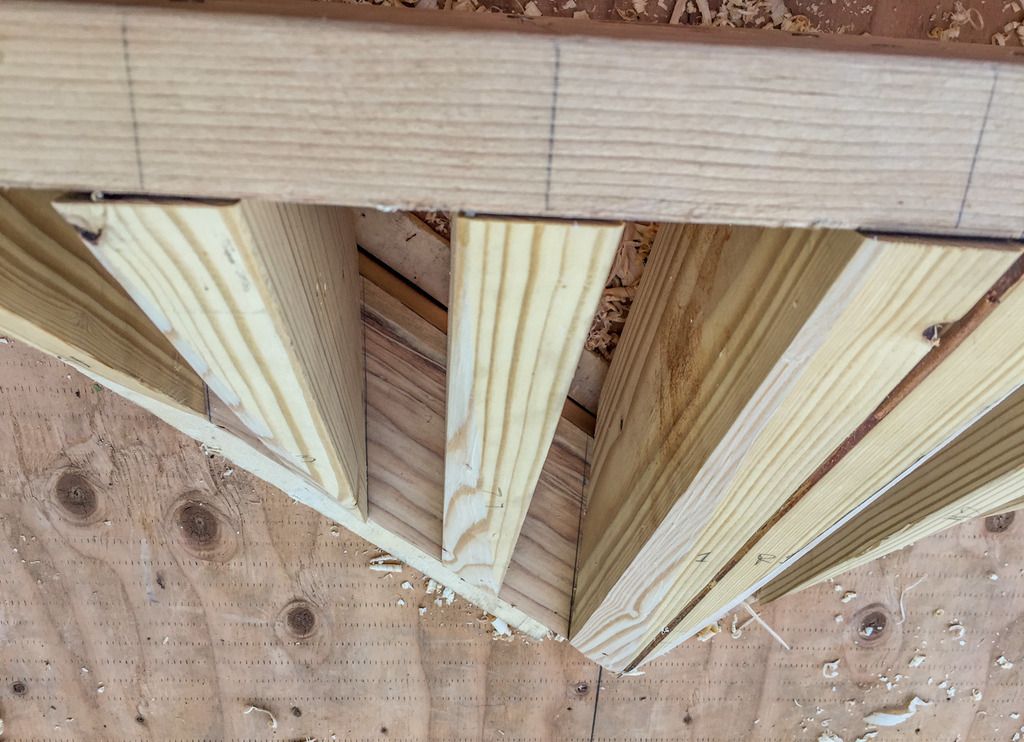
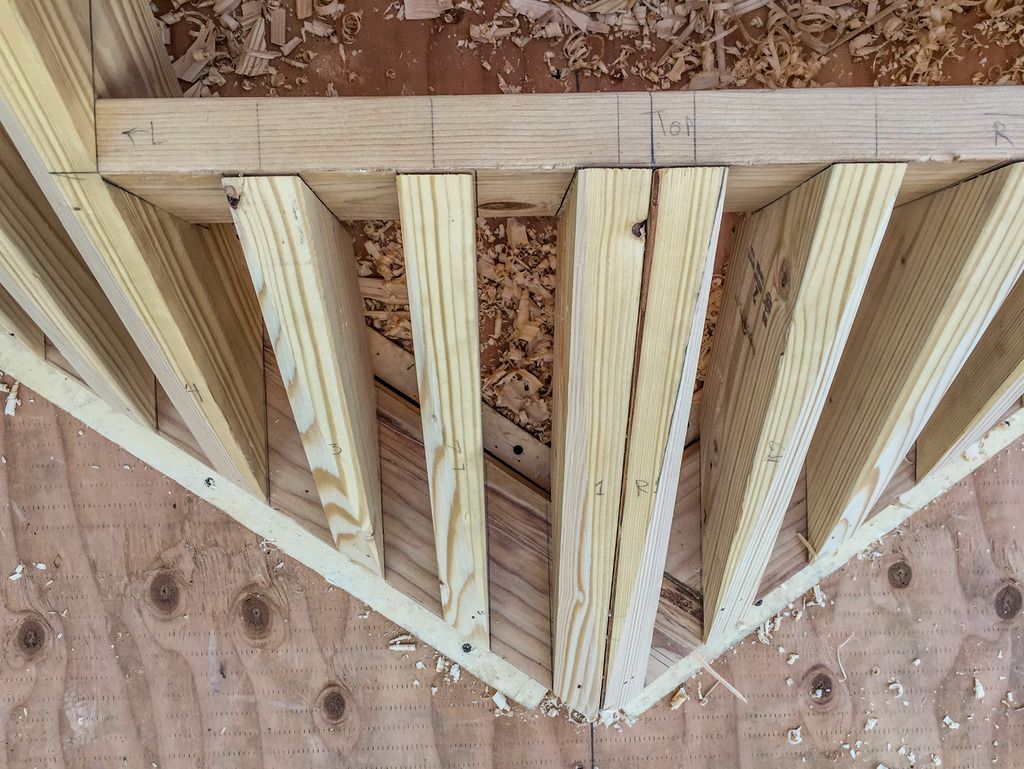
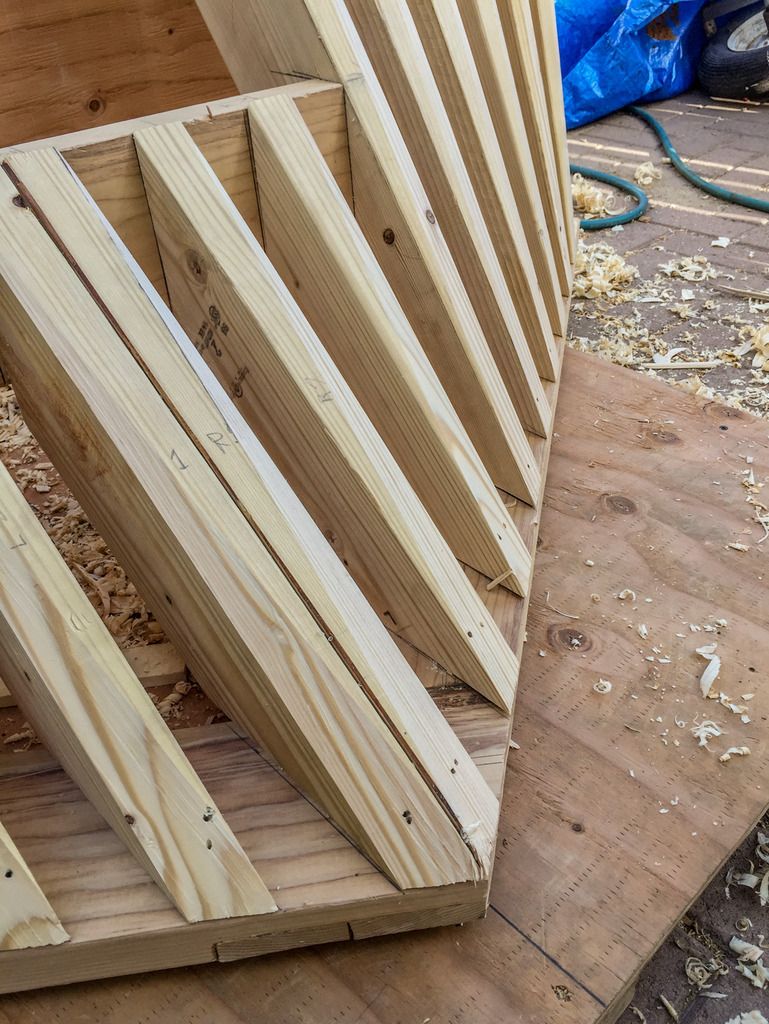
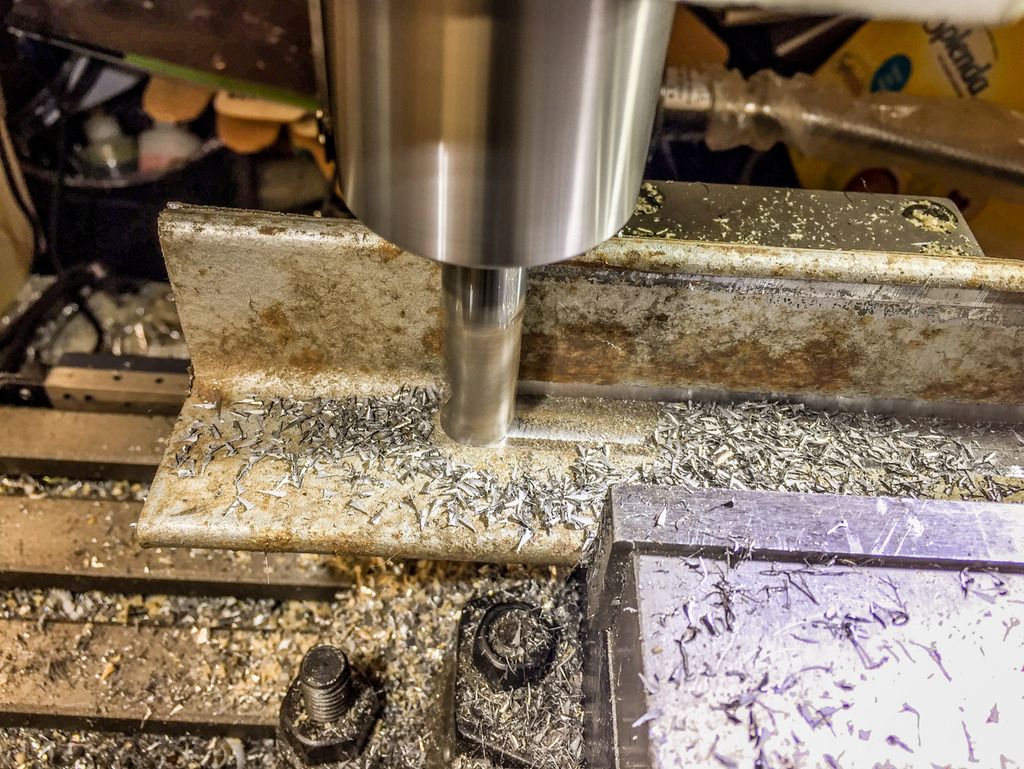
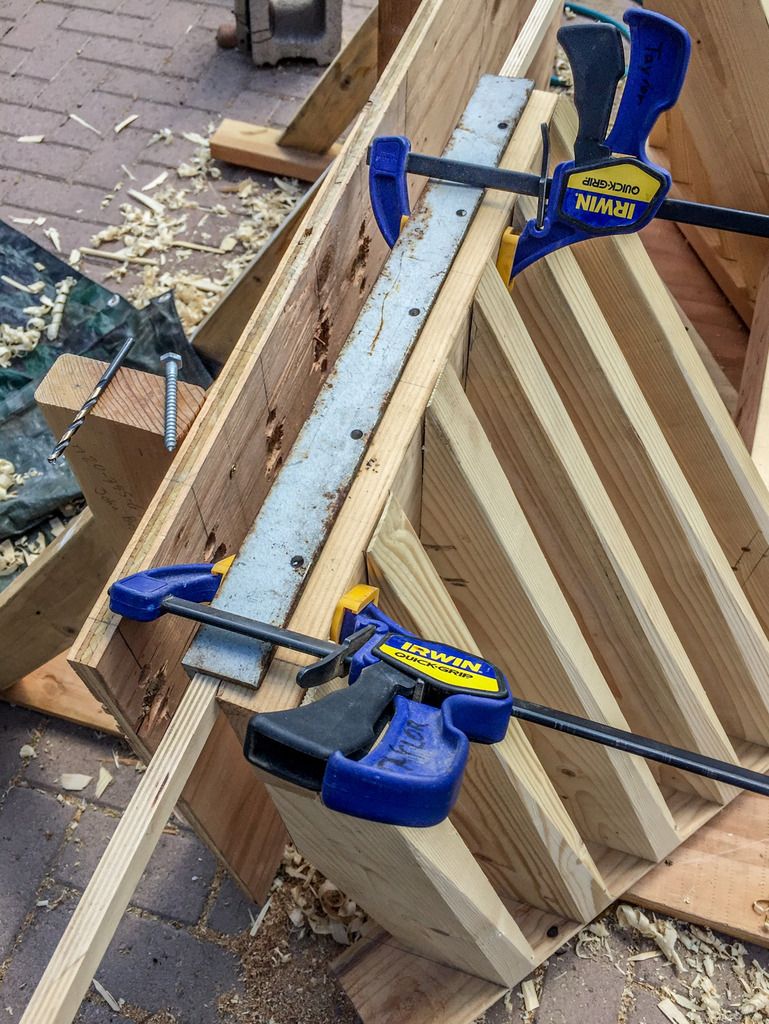
 ]
]